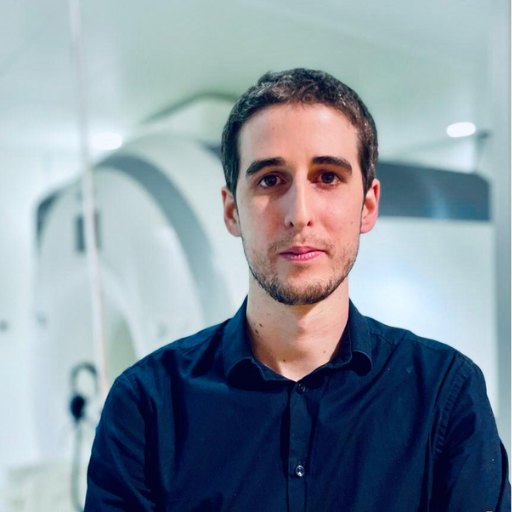Locus Coeruleus and Sleep Disturbances in Preclinical Alzheimer’s Disease

Principal Investigator
Maxime van Egroo, PhD
Maastricht University (Netherlands)
Maastricht, Netherlands
About the Research Project
Program
Award Type
Postdoctoral Fellowship
Award Amount
$200,000
Active Dates
July 01, 2021 - December 31, 2023
Grant ID
A2021016F
Mentor(s)
Heidi Jacobs, PhD, Maastricht University (Netherlands)
Goals
To determine if modifications in the structure and function of the LC relate to changes in the sleep-wake cycle, in the accumulation of hallmark AD pathologies, and ultimately to cognitive decline. First, multi-modal 7T MRI assessments of the LC will be related to sleep-wake fragmentation metrics derived from actigraphic recordings to examine the links between LC structural/functional properties and sleep-wake regulation in cognitively unimpaired adults. Then, the impact of APOE status and plasma AD biomarkers on the relationship between LC integrity and sleep-wake regulation will be assessed. Finally, the predictive value of these variables for AD-related cognitive decline will be evaluated based on longitudinal assessments of cognition over three years.
Summary
Sleep has been recently identified as an important modifiable factor to delay the onset of Alzheimer’s disease (AD). However, the brain structures critically involved in the relationships between sleep disturbances and early AD pathology remain poorly investigated. The proposed project postulates that a tiny region located deep in the brain, the brainstem locus coeruleus (Latin for ‘blue spot’, LC), is particularly important for the link between sleep-wake disturbances and the earliest manifestations of AD. Indeed, the LC is a crucial structure in the consolidation of the sleep-wake cycle and has been demonstrated to be among the first regions affected by AD. This research aims to use advanced brain imaging methods to extensively characterize the LC in healthy adults across the lifespan, in order to determine how modifications in the structure and function of the LC relate to changes in the sleep-wake cycle, in the accumulation of hallmark AD pathologies, and ultimately to cognitive decline.
Unique and Innovative
So far, researchers who aimed to link LC properties to sleep-wake regulation measures in humans were confronted by the extreme difficulty to image this nucleus in vivo, due to its deep location in the brainstem and its small size. Our proposal takes advantage of state-of-the-art methods in ultra-high field neuroimaging to extensively characterize the LC in vivo with unprecedented resolution. This will allow, for the first time, to address the existing gap in the understanding of the interplay between LC alterations, sleep-wake patterns, and AD-related pathophysiological processes in humans.
Foreseeable Benefits
The outcomes of this project will contribute to disentangling the intricate relationships between LC integrity, sleep-wake regulation, and AD-related processes, which will provide crucial information about the mechanisms at play in the earliest stages of the disease. As sleep deprivation is a trademark of our 24/7 society, this study will provide researchers and clinicians with new, early targets, and will pave the way toward novel treatments based on implementing preventive interventions in individuals who have been identified at higher risk of developing AD.
Related Grants
Alzheimer's Disease Research
Repairing the Body Clock to Delay Alzheimer's Disease
Active Dates
July 01, 2025 - June 30, 2028

Principal Investigator
Jae-Eun Miller, PhD
Current Organization
Columbia University
Repairing the Body Clock to Delay Alzheimer's Disease
Active Dates
July 01, 2025 - June 30, 2028

Principal Investigator
Jae-Eun Miller, PhD
Current Organization
Columbia University
Alzheimer's Disease Research
A Sleeping Pill for Alzheimer's Disease
Active Dates
July 01, 2025 - June 30, 2028

Principal Investigator
Ksenia Kastanenka, PhD
Current Organization
Massachusetts General Hospital
A Sleeping Pill for Alzheimer's Disease
Active Dates
July 01, 2025 - June 30, 2028

Principal Investigator
Ksenia Kastanenka, PhD
Current Organization
Massachusetts General Hospital
Alzheimer's Disease Research
The Effect of Alzheimer's Disease on Neurons Across the Sleep/Wake Cycle
Active Dates
July 01, 2024 - June 30, 2026

Principal Investigator
Md Joynal Abedin, PhD
Current Organization
Massachusetts General Hospital
The Effect of Alzheimer's Disease on Neurons Across the Sleep/Wake Cycle
Active Dates
July 01, 2024 - June 30, 2026

Principal Investigator
Md Joynal Abedin, PhD
Current Organization
Massachusetts General Hospital



